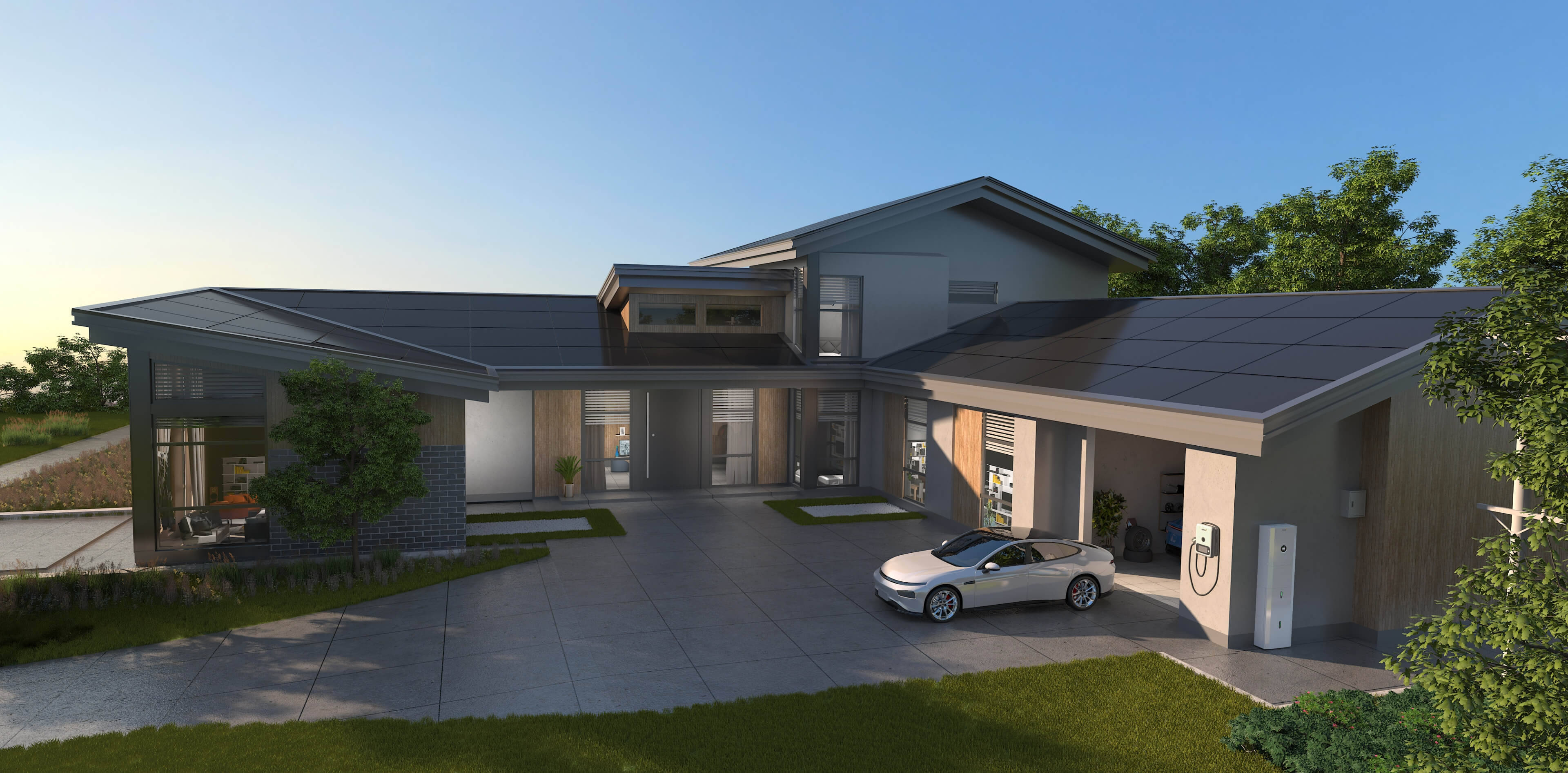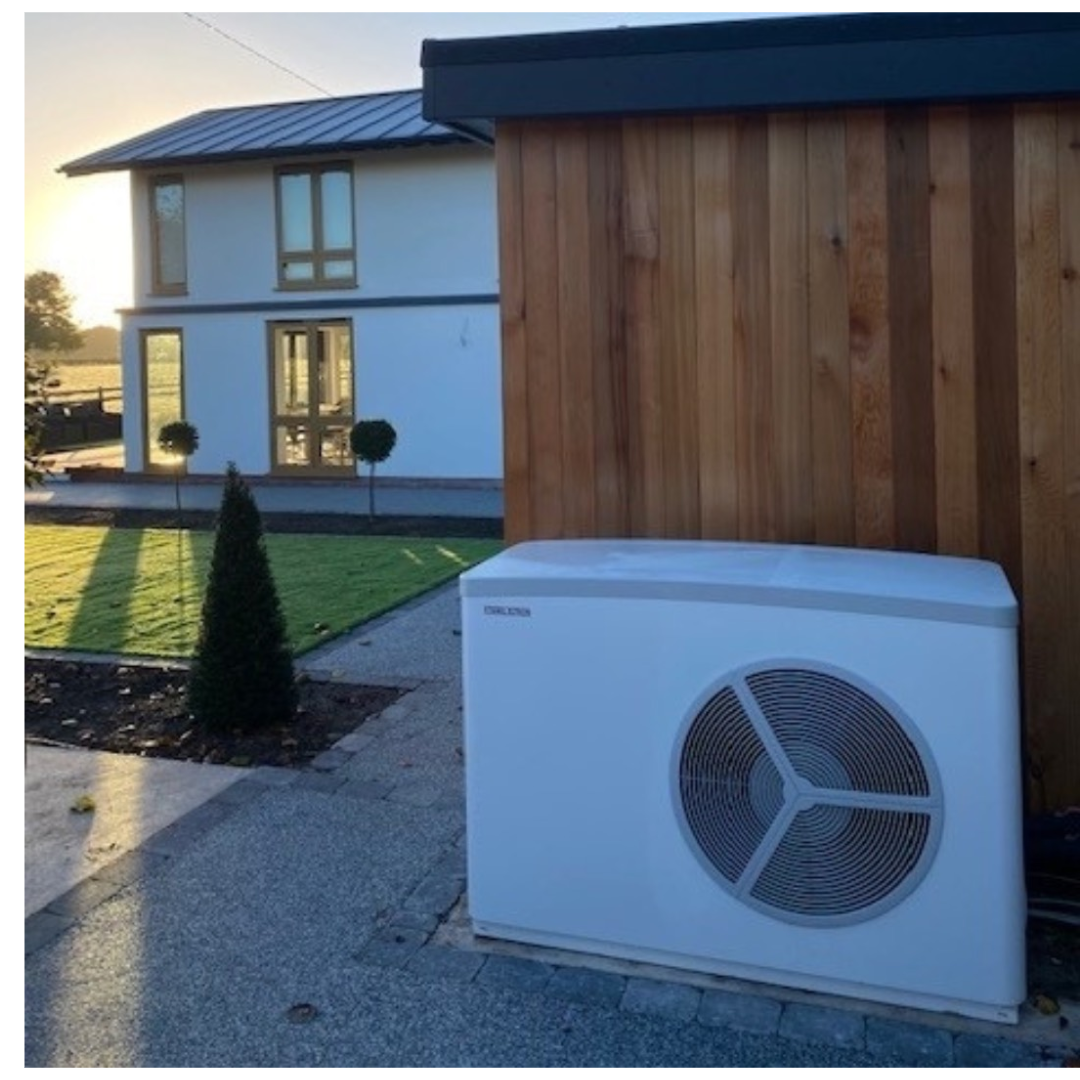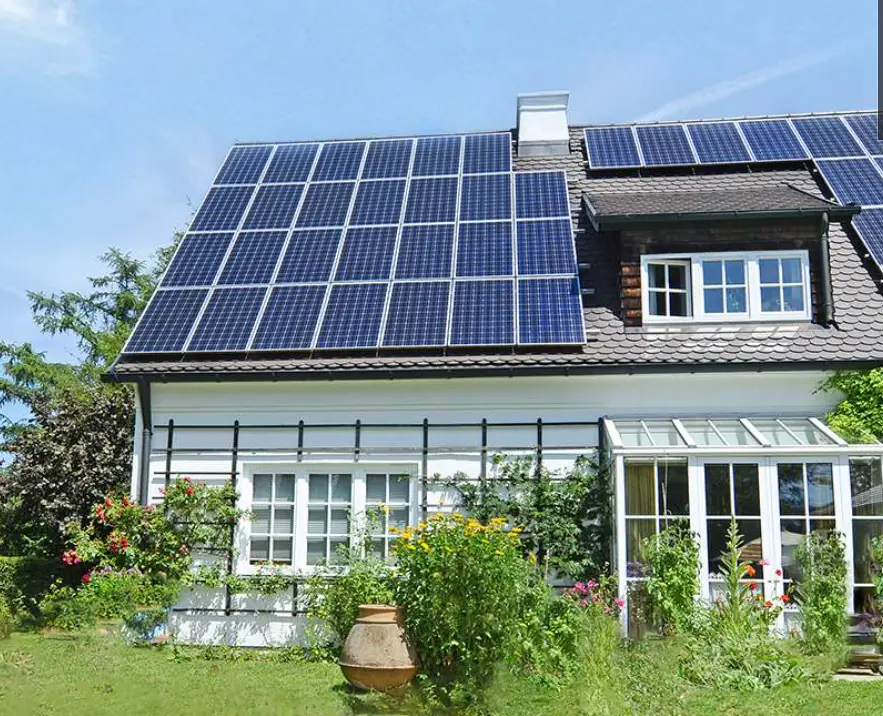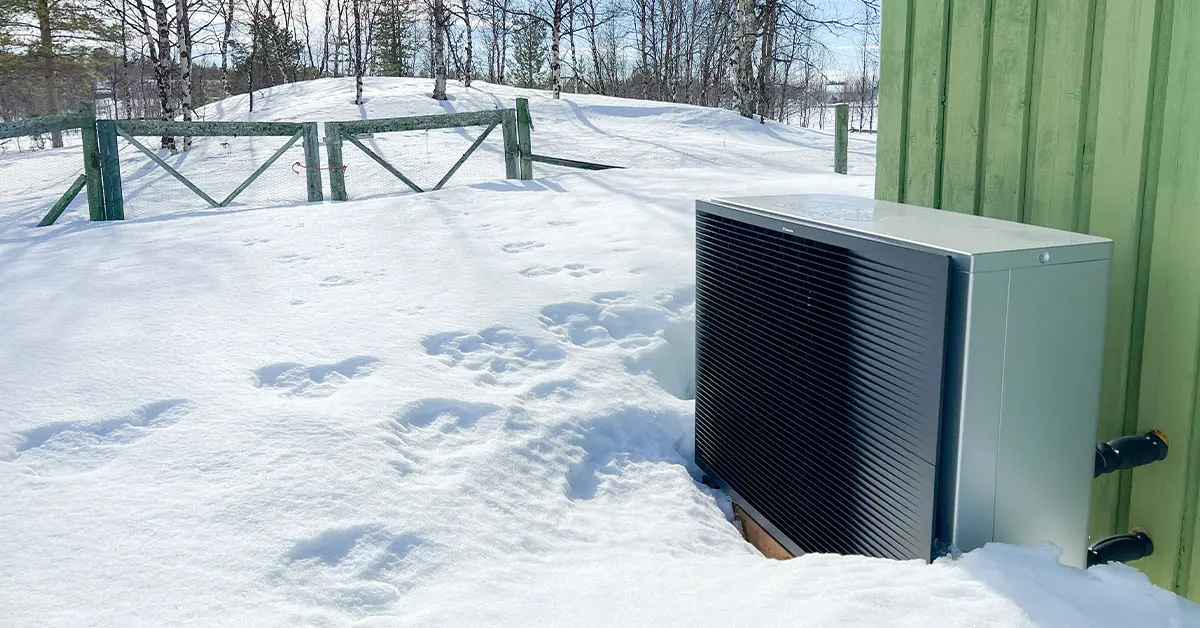
Below, we’ll be explaining everything you need to know about heat pumps in cold weather including:
- What temperatures they can work at
- What stops them freezing
- How efficient heat pumps are in winter
- Things you can do to improve the overall efficiency of your heat pump in cold weather
Get quotes on a suitable unit for your property by using our heat pump tool here.
Alternatively, if you have questions about heat pumps and cold weather, speak to one of our experts here.
What Temperatures Can Heat Pumps Work At?

High quality air source heat pumps can work well below freezing. For instance, the Vaillant aroTHERM R290 can operate at temperatures as low as -25°C.
Given the UK rarely sees days below 0°C - even in winter - any high quality heat pump will still operate throughout the colder months of the year. Most units have fail safes built in to protect them from freezing, such as a defrost cycle.
Whilst your heat pump will continue to operate, it’s likely to use more electricity than usual to keep your house warm as outside temperature drops.
Below we’ll explain expected efficiency drops, as well as what you can do to maximise efficiency of your heat pump during winter.
What Stops Heat Pumps From Freezing?
First, is the refrigerant they use. If we take R290 as an example, it has a freezing temperature of −188°C.
Most quality air source heat pumps will also incorporate defrost functionality.
To prevent a pump becoming blocked with frost or ice, it will go through a de-icing cycle. This cycle tends to kick in when outdoor temperature dips below 2.5°C. Air being drawn in can instantly freeze causing issues for your heat pump. The de-icing cycle makes sure this doesn’t happen.
An air source heat pump using a defrost or de-icing cycle will activate on and off and for a few minutes at a time. The job of the defrost cycle is to de-ice the back of your heat pump unit. During this time, it's likely you'll see steam or water coming from the bottom of your heat pump; this is completely normal.
Other methods of ensuring your heat pump and heating system don't freeze include using an anti freeze valve and heating system anti freeze.
An anti-freeze release valve will release water from your heat pump if it gets too cold. It's better to ditch this water, rather than letting it freeze.
For heating pipes, although they are unlikely to freeze if sufficient lagging is used, you can still use antifreeze chemicals to further protect your system. As an example, there's Sentinel’s X500 Frost Protector, which can easily be mixed into your heating water.
Can I De-ice My Heat Pump With Hot Water?
A worthy side note here is that you should never pour hot water over your heat pump to de-ice it.
Firstly, the heat could mean parts (such as the fan blades) heat up too quickly and crack. That's going to lead to an expensive repair.
Secondly, your heat pump is an electrical appliance. Pouring water over it isn't just dangerous, it could damage some of the electrical components...another expensive repair bill!
Instead, ensure your heat pump’s defrost function is active.
Are Heat Pumps Efficient in Winter?
Heat pump’s efficiency is going to drop in winter, as it’s likely you’ll need a higher flow temperature to maintain a consistent temperature in your property.
A typical air source heat pump works best “low and slow”. The lower the flow temperature (and the larger your radiators are), the better. Even a slight increase in temperature can increase electricity consumption dramatically.
Ideal Heating provides comprehensive data for all of their products, including the Ideal Logic Air source heat pump.
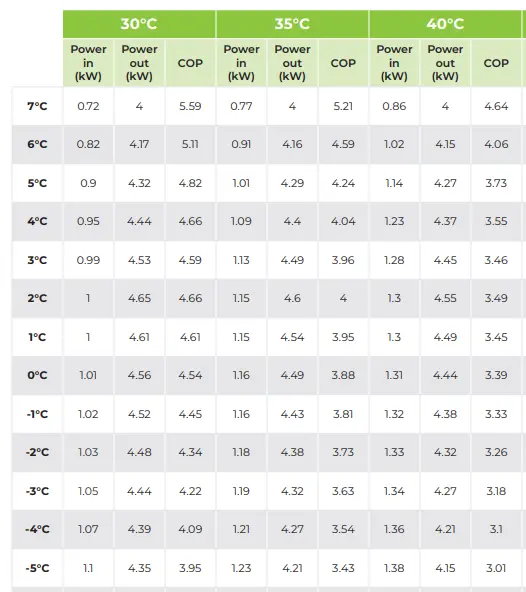
If we take the 4kW Ideal Logic Air as an example, we can see at 0°C outdoor temperature and 30°C flow temperature, you'd get a COP (Coefficient of Performance) of 4.54. This means it's working at 454% efficiency, or, producing 4.54kWh of heat for every 1kWh of electricity that it consumes.
Increase this flow temperature to 40°C? You'll see this COP rating drop from 4.54 (454% efficient) to 3.39 (339%). It’s then only producing 3.39kWh of heat for every 1kWh of heat it consumes.
This is further amplified if the outdoor temperature dips. At -5°C outdoor temperature, instead of maximum efficiency being 454% (30°C flow temperature), efficiency ratings will drop to 395%.
Still, this is much more efficient than a gas boiler. A brand new A-rated boiler is typically 94% efficient (COP of 0.94).
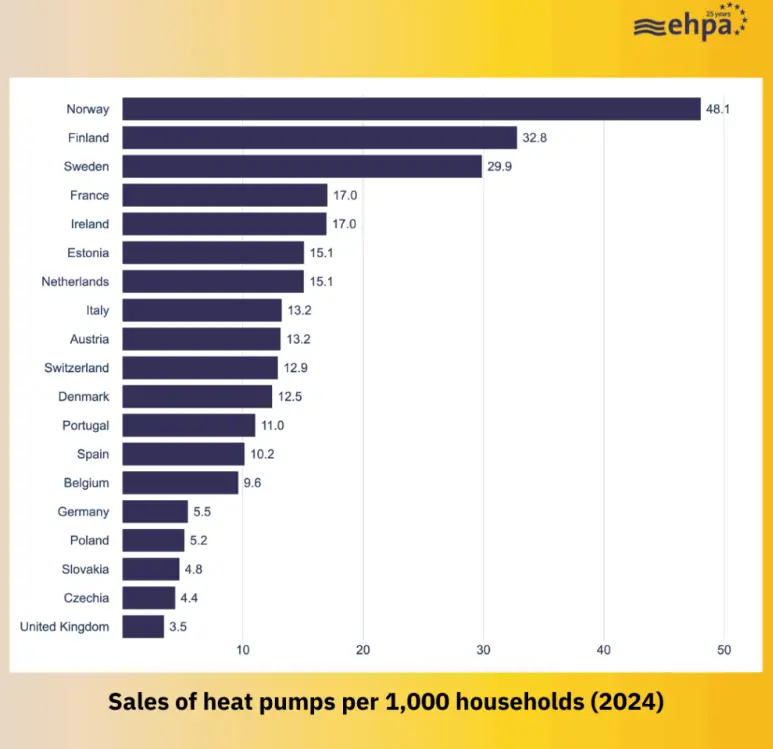
Improving Energy Efficiency in Cold Weather
With the potential for large efficiency drops during winter, what can you do to increase efficiency of your air source heat pump?
- Pipe Insulation
Make sure your unit is well insulated.
It’s possible your installer hasn’t used enough lagging, or lagging that’s high enough quality. Lagging wraps around pipes, helping reduce loss of temperature.
- Free Your ASHP of Obstruction
One of the reasons we recommend regular maintenance is because the fan blades become dirty. Dirty fan blades lead to a drop in efficiency.
Whether it’s ice, snow or leaves, anything that’s blocking your air source heat pump is going to drastically reduce its efficiency too. If anything is blocking the flow of air to your heat pump, remove it as soon as possible.
As we mentioned above, do not pour warm water over your heat pump to remove snow or ice; you could damage your heat pump.
- Upgrade Radiators
Struggling with heat pump efficiency during winter? Consider upgrading your radiators.
Gas boilers work best with flow temperatures of roughly 60°C, which get radiators almost scalding hot.
The lower the flow temperature your heat pump operates at, the more efficient it will be; many pumps work at as low as 30°C.
To make up the deficit of reduced flow temperature, you’ll need to supersize your radiators. Typically, radiators for an air source heat pump should be anywhere from 50-100% larger in output, in comparison to those you’d use with a gas boiler system.
- Set a Consistent Temperature
With air source heat pumps working most efficiently at low flow temperatures, you’ll never want to overwork your unit. This leads to excess electricity consumption and a large utility bill.
Setting a consistent temperature and leaving your heat pump on the majority of the time, means your unit will simply cycle on and offer to maintain your property’s temperature.
This requires very little electricity.
On the flip side, if you let your house cool dramatically (say, overnight), your pump will be overworked to get your house up to temperature.
Heat pumps use a lot less electricity (and therefore, are more efficient) when you set a consistent temperature rather than flicking your heating on and off constantly.
- Clean Filters Before Winter Begins
Filters in an air source heat pump are a crucial component; they protect your system.
However, if your filter is dirty or clogged, your pump is going to have to work harder to maintain your desired property temperature. A dirty filter would be the equivalent of leaves blocking the air flow to the fan blades.
Cleaning the filter (as well as fan blades) is a crucial part of heat pump maintenance and helps to maintain its high efficiency.
Our advice? Get your fan blades and filter cleaned before the winter months kick in to maximise efficiency and reduce your electricity bill.
Ready to get prices on the perfect unit for your property? Check out our clickable heat pump quotation tool here.
Looking for a new boiler quote?
Try our free quote tool. You'll have your personalised quote in under a minute.




